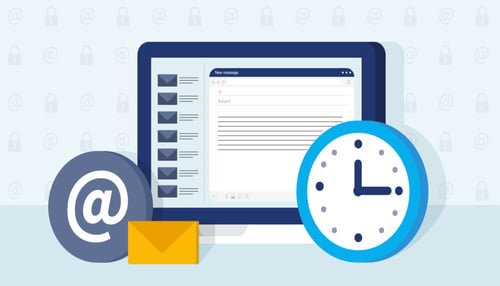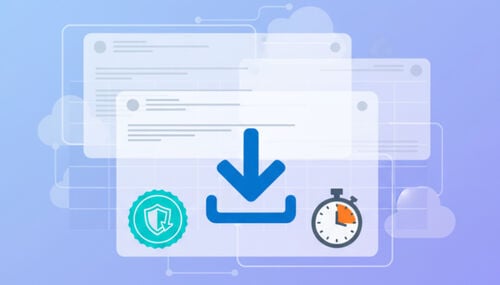How Domain Rotation Improves OTP Reliability for Temp Mail (Temporary Email)
When one‑time passwords don’t arrive, people smash the resend button, churn, and blame your service. In practice, most failures aren’t random; they cluster around rate limits, greylisting, and poor timing. This hands‑on piece shows how to diagnose, wait smartly, and rotate your temp mail address (domain switch) on purpose—not out of panic. For a deep systems view of the pipeline, see the entity‑first explainer How Temporary Email Works (A–Z).
Quick access
TL;DR / Key Takeaways
Spot Delivery Bottlenecks
Respect Resend Windows
Rotate Your Temp Mail Address
Design Your Rotation Pool
Metrics That Prove Rotation Works
Case Studies (Mini)
Avoid Collateral Damage
The Future: Smarter, Per‑Sender Policies
Step‑by‑Step — Rotation Ladder (HowTo)
Comparison Table — Rotation vs. No‑Rotation
FAQ
Conclusion
TL;DR / Key Takeaways
- OTP misses often stem from premature resends, greylisting, and sender throttles.
- You can use a short rotation ladder; only rotate after properly resending windows.
- Define explicit thresholds (per‑sender failures, TTFOM) and log them rigorously.
- Track OTP success rate, TTFOM p50/p90, retry count, and rotation rate.
- Avoid over‑rotation; it harms reputation and confuses users.
Spot Delivery Bottlenecks
Identify where OTP gets stuck—client‑side errors, rate limits, or greylisting—before you touch domains.
On the surface, it seems trivial. In real terms, OTP loss has distinct signatures. Start with a quick fault map:
- Client/UI: wrong address pasted, inbox not refreshing, or a view filtered to text‑only with images blocked.
- SMTP/provider: greylisting on the sender’s side, IP or sender throttling, or temporary queue back‑pressure.
- Network timing*: peak windows for large senders, uneven paths, and campaign bursts that delay non‑critical mail.
Use fast diagnostics:
- TTFOM (time‑to‑first‑OTP message). Track p50 and p90.
- OTP Success Rate per sender (the site/app issuing codes).
- Resend Window Adherence: How often do users hit resend too early?
The upshot is simple: don’t rotate domains until you know what’s failing. A one‑minute audit here prevents hours of thrash later.
Respect Resend Windows

Jumping the gun often worsens deliverability—time your next try.
As a matter of fact, many OTP systems deliberately slow repeated sends. If users retry too soon, rate‑limit defenses kick in and the following message is deprioritized—or dropped. Use pragmatic windows:
- Try 2 only after 30–90 seconds from the first attempt.
- Try 3 after an additional 2–3 minutes.
- High‑risk fintech* flows sometimes benefit from waiting up to five minutes before escalation.
Design copy that calms, not provokes: “We’ve resent the code. Check again in about 60 seconds.” Log every resend with timestamp, sender, active domain, and outcome. This alone fixes a surprising share of “delivery” problems.
Rotate Your Temp Mail Address
Use a small decision ladder; rotate only when signals say so.
Rotation should feel boring and predictable. Here’s a compact ladder you can teach your team:
- Verify the inbox UI is live and the address is correct.
- Wait for the first window; then resend once.
- Check the alternate view (spam/plain‑text) to see if your UI offers it.
- Resend a second time after the extended window.
- Rotate the temp mail address/domain only when thresholds say you should.
Thresholds that justify the rotation of a temp mail address
- Per‑sender failures ≥ N within M minutes (choose N/M for your risk appetite).
- TTFOM repeatedly exceeds your limit (e.g., >120 seconds twice a row).
- Signals are tracked per sender × domain, never “rotate blind.”
Guardrails matter—cap rotations to ≤2 per session. Keep the local‑part (prefix) when possible so users don’t lose context.
Design Your Rotation Pool

The quality of your domain pool matters more than the size.
Surprisingly, another dozen domains won’t help if they’re all “noisy.” Build a curated pool:
- Diverse TLDs with clean histories; avoid any that were heavily abused.
- Balance freshness vs. trust: new can slip through, but age signals reliability; you need both.
- Bucket by use‑case*: e‑commerce, gaming, QA/staging—each can have different senders and load patterns.
- Rest policies: let a domain cool down when its metrics degrade; watch for recovery before re‑admitting it.
- Metadata on each domain: age, internal health score, and last‑seen successes by sender.
Metrics That Prove Rotation Works
If you don’t measure, rotation is just a hunch.
Pick a compact, repeatable set:
- OTP Success Rate by sender.
- TTFOM p50/p90 in seconds.
- Retry Count median before success.
- Rotation Rate: fraction of sessions requiring a domain switch.
Analyze by sender, domain, country/ISP (if available), and time of day. In practice, compare a control group that waits through two windows before rotating versus a variant that rotates after the first fail. On balance, the control prevents needless churn; the variant rescues edge cases during sender slowdowns. Your numbers will decide.
Case Studies (Mini)
Short stories beat theory—show what changed after rotation.
- Large platform A: TTFOM p90 dropped from 180s → 70s after enforcing resend windows and rotating on threshold, not emotion.
- E‑commerce B: OTP success climbed 86% → 96% by applying per‑sender thresholds and cooling noisy domains for a day.
- QA suite: flaky tests fell sharply after splitting pools: staging traffic no longer poisoned production domains.
Avoid Collateral Damage
Protect reputation while fixing OTP—and don’t confuse users.
There’s a catch. Over‑rotation looks like abuse from the outside. Mitigate with:
- Reputation hygiene: rotation caps, rest periods, and alerts on abuse spikes.
- UX steadiness: preserve the prefix/alias; message users lightly when a switch occurs.
- Security discipline: don’t expose rotation rules publicly; keep them server‑side.
- Local rate‑limits*: throttle trigger‑happy clients to stop resend storms.
The Future: Smarter, Per‑Sender Policies
Rotation will be personalized by sender, region, and time of day.
Profiles per sender will become standard: different windows, thresholds, and even domain subsets based on their historical behavior. Expect time‑aware policies that relax at night and tighten at peak hours. Light automation alerts when metrics drift, suggests rotations with reasons, and keeps humans in the loop while removing guesswork.
Step‑by‑Step — Rotation Ladder (HowTo)
A copy‑pasteable ladder for your team.
Step 1: Verify the Inbox UI — Confirm the address, and ensure the inbox view updates in real time.
Step 2: Try Resend Once (Wait Window) — Send again and wait 60–90 seconds; refresh the inbox.
Step 3: Try Resend Twice (Extended Window) — Send a second time; wait 2–3 more minutes before rechecking.
Step 4: Rotate Temp Mail Address/Domain (Threshold Met) — Switch only after thresholds fire; keep the same prefix if possible.
Step 5: Escalate or Switch Inbox — If urgency remains, finish the flow with a durable inbox; return to token‑based reuse later.
For continuity scenarios, see how to reuse a temp mail address with token‑based recovery safely.
Comparison Table — Rotation vs. No‑Rotation
When does rotation win?
| Scenario | Resend Discipline | Rotation? | TTFOM p50/p90 (before → after) | OTP Success % (before → after) | Notes |
|---|---|---|---|---|---|
| Sign up for peak hour | Good | Yes | 40/120 → 25/70 | 89% → 96% | Sender throttling at p90 |
| Off‑peak sign‑up | Good | No | 25/60 → 25/60 | 95% → 95% | Rotation unnecessary; keep reputation steady |
| Gaming login with greylisting | Medium | Yes | 55/160 → 35/85 | 82% → 92% | Rotate after two waits; greylisting subsides |
| Fintech password reset | Medium | Yes | 60/180 → 45/95 | 84% → 93% | Stricter thresholds; preserve prefix |
| Regional ISP congestion | Good | Maybe | 45/140 → 40/110 | 91% → 93% | Rotation helps slightly; focus on timing |
| Bulk sender incident (campaign burst) | Good | Yes | 70/220 → 40/120 | 78% → 90% | Temporary degradation; cool noisy domains |
| QA/Staging split from production | Good | Yes (pool split) | 35/90 → 28/70 | 92% → 97% | Isolation removes cross‑noise |
| High‑trust sender, stable flows | Good | No | 20/45 → 20/45 | 97% → 97% | Rotation cap prevents needless churn |
FAQ
When should I rotate instead of just resending?
After one or two disciplined resends that still fail, your thresholds trigger.
Does rotation hurt reputation?
It can, if abused. Use caps, rest domains, and per-sender tracking.
How many domains do I need?
Enough to cover load and sender diversity; quality and bucketing matter more than raw count.
Does rotation break token-based reuse?
No. Keep the same prefix; your token continues to recover the address.
Why are codes slower at certain hours?
Peak traffic and sender throttling push non-critical mail back in the queue.
Do you think I should auto-rotate on the first failure?
No. Follow the ladder to avoid needless churn and reputation damage.
How do I spot a “tired” domain?
Rising TTFOM and falling success for a given sender × domain pair.
Why does the code appear but not show up in my inbox view?
The UI may be filtered; switch to a plain-text or spam view and refresh.
Do regional differences matter?
Potentially. Track by country/ISP to confirm before changing policies.
How long should I wait between resends?
About 60–90 seconds before Try 2; 2–3 minutes before Try 3.
Conclusion
The bottom line is that rotation only works when it’s the last step of a disciplined process. Diagnose, respect resend windows, and then switch domains under clear thresholds. Measure what changes, rest what degrades, and keep users oriented with the same prefix. If you need the full mechanics behind temporary inboxes, revisit the How Temporary Email Works (A–Z) explainer.









